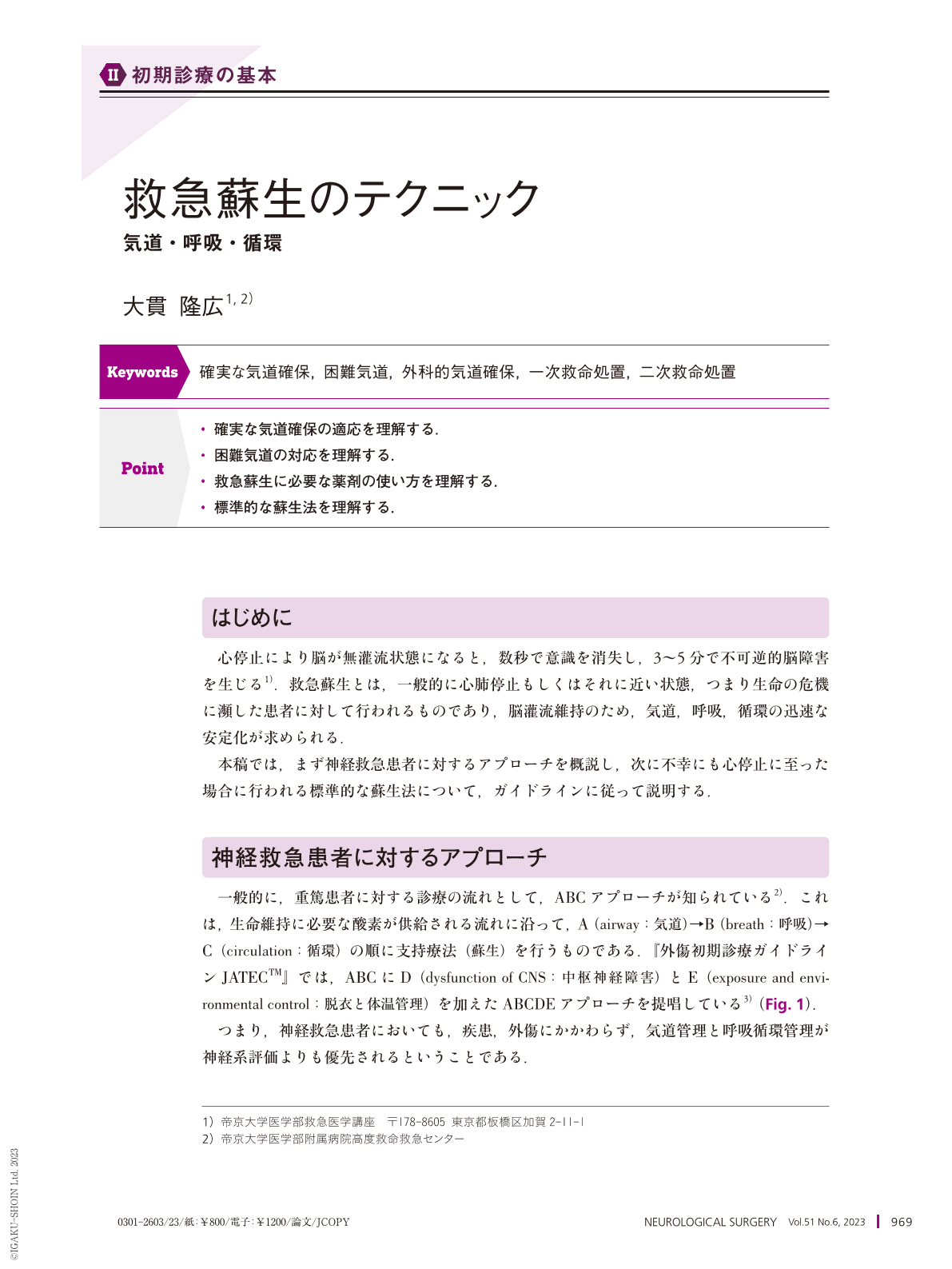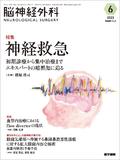Japanese
English
- 有料閲覧
- Abstract 文献概要
- 1ページ目 Look Inside
- 参考文献 Reference
Point
・確実な気道確保の適応を理解する.
・困難気道の対応を理解する.
・救急蘇生に必要な薬剤の使い方を理解する.
・標準的な蘇生法を理解する.
Cardiac arrest causes cerebral anoxia, resulting in loss of consciousness within seconds and irreversible brain damage within 3-5 min. Emergency resuscitation is generally performed on patients in cardiopulmonary or near-cardiopulmonary arrest, i.e., life-threatening conditions, and requires rapid stabilization of the airway, breathing, and circulation(or “ABC”)to maintain cerebral perfusion.
Generally, the ABC approach represents the order of medical treatment for critically ill patients. It provides supportive care(resuscitation)after ensuring the flow of oxygen supply necessary to sustain life.
The most important goal in emergency resuscitation is to ensure a secure airway, without which, resuscitation is hopeless. Clinicians should be prepared daily to avoid missing any opportunity to ensure a secure airway. Even in cardiac arrest, high-quality cardiopulmonary resuscitation is necessary to reduce the duration of cerebral anoxia. An algorithm for this high-quality cardiopulmonary resuscitation is described in this article.

Copyright © 2023, Igaku-Shoin Ltd. All rights reserved.


